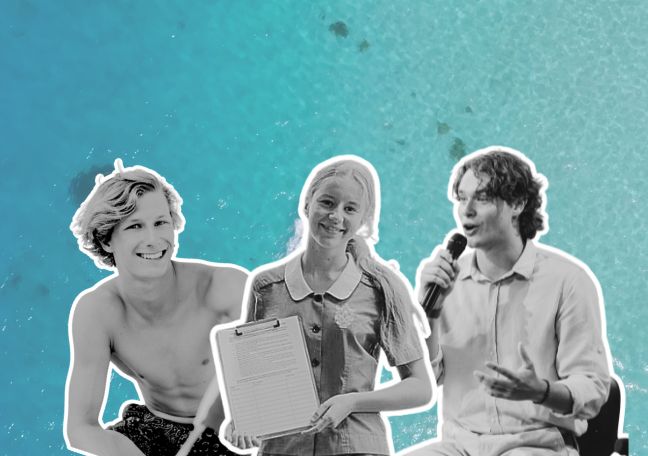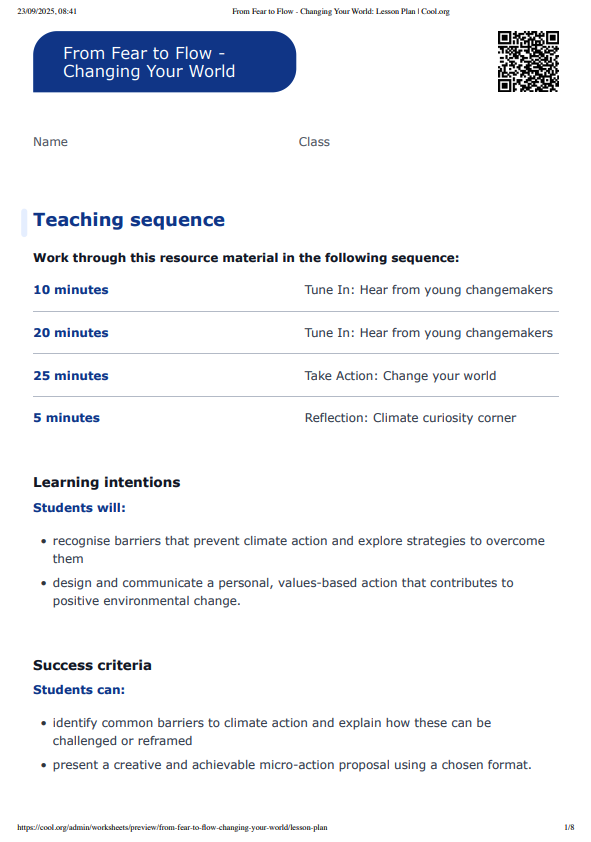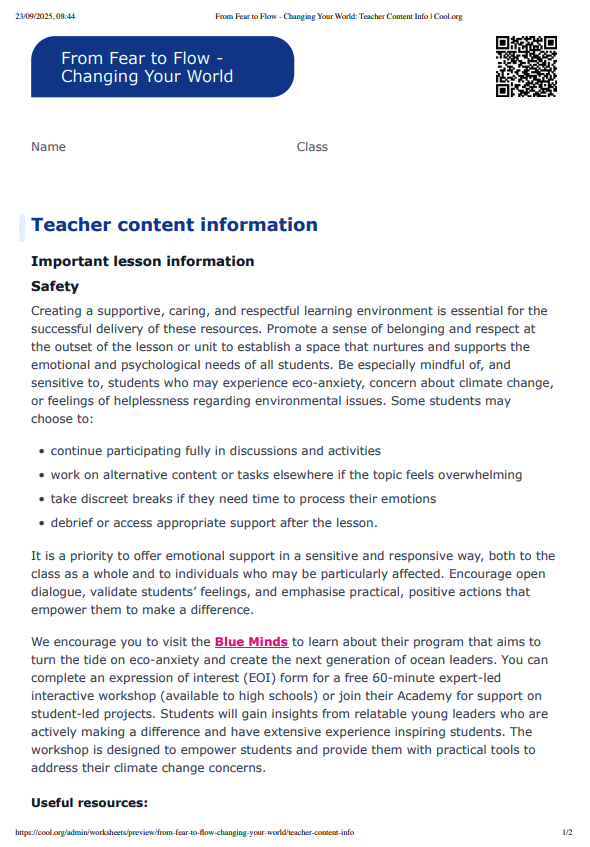Lesson summary
Students will identify a strategy for action in relation to environmental, economic, social, or other factors and explain potential impacts by hearing from young changemakers who are doing amazing things to help our environment. To show their understanding, they will develop a plan explaining how they will carry out a chosen key action to contribute to a better future environment.
Learning intentions
Students will:
- recognise barriers that prevent climate action and explore strategies to overcome them
- design and communicate a personal, values-based action that contributes to positive environmental change.
Success criteria
Students can:
- identify common barriers to climate action and explain how these can be challenged or reframed
- present a creative and achievable micro-action proposal using a chosen format.
Lesson guides and printables
Lesson details
Skills
This lesson is designed to build students’ competencies in the following skills:
- creative thinking
- critical thinking
- collaboration
- communication
- ethical understanding
- global citizenship
- reflection
Curriculum Mapping
Australian Curriculum (v9.0) content description:
Year 7, Geography
Students learn to:
- identify a strategy for action in relation to environmental, economic, social or other factors, and explain potential impacts (AC9HG7S05).
Year 8, Geography
Students learn to:
- identify a strategy for action in relation to environmental, economic, social or other factors, and explain potential impacts (AC9HG8S05).
Relevant parts of Year 7 achievement standards: Students develop a strategy for action.
Relevant parts of Year 8 achievement standards: Students decide on appropriate strategies for action and explain potential impacts.
NSW Syllabus outcomes:
A student
- explains the management and protection of places and environments (GE4-MAN-01)
General capabilities: Critical and Creative Thinking, Ethical Understanding, Personal and Social Capability.
Cross-curriculum priority: Sustainability
Level of teacher scaffolding: Medium – facilitate class discussion, assist group work.
UN Sustainable Development Goals
- Target 4.7: By 2030, ensure that all learners acquire the knowledge and skills needed to promote sustainable development, including, among others, through education for sustainable development and sustainable lifestyles, human rights, gender equality, promotion of a culture of peace and non-violence, global citizenship and appreciation of cultural diversity and of culture’s contribution to sustainable development.
Resources Required
- Device capable of displaying audiovisual material
- Student devices
Additional Info
Blue Minds Youth Ocean Leadership program aims to turn the tide on eco-anxiety and create the next generation of leaders. They aim to address this by providing free expert-led workshops to high schools, TAFEs and universities. Students will gain insights from relatable young leaders who are actively making a difference and have extensive experience inspiring students. An initiative by Surfers for Climate & The Good Human Factory.
Related Professional Learning
Using the Cool.org Hope Framework in the Classroom - Secondary
Quick Summary: This course will explain the benefits of hope to your students and provide practical examples of how to use our Framework in your classroom.



Welcome back!
Don't have an account yet?
Log in with:
Create your free Cool.org account.
Many of our resources are free, with an option to upgrade to Cool+ for premium content.
Already have an account?
Sign up with:
By signing up you accept Cool.org's Terms and Conditions(Opens in new tab) and Privacy Policy(Opens in new tab).